
1889 - 1974
Yury Annenkov

description
A Russian avant-garde artist, graphic illustrator, an outstanding figure of theater and cinema and writer. The style of the creator in fine art was revealed in the harmonious combination of Modern, Cubism and Futurism with the techniques of traditional painting.
Annenkov’s significant gallery of acutely characteristic portraits of painters and writers, politicians and artists was formed – in 1922, 80 paintings that convey the appearance of key figures of the time – Akhmatova and Meyerhold, Pasternak and Mayakovsky, Remizov and Gorky, Zamyatin and Khlebnikov, Trotsky, Lunacharsky, Zinoviev and others – were included in the album “Portraits”. He was awarded the first prize for a portrait of Lenin in 1924 – it was printed on banknotes and stamps.
It is impossible to overestimate his innovative contribution to the scenography of both Russian and French theaters. Working with Stanislavsky, Meyerhold, Komissarzhevsky, Baliev, Annenkov first put forward and embodied the idea of pointless kinetically changing scenery. As a film artist, he was awarded the Oscar.
Boris Temiryazev created dramatic and prosaic works, journalism and memoirs “Diary of my meetings” under a pseudonym. Having written vivid and not always complimentary memories of Blok, Gorky, Mayakovsky, Zamyatin, Akhmatova, Pasternak became an author who was forbidden to publish his works in the USSR.
Key ideas:
– Yuri Annenkov, who did not receive a systematic art education, was to some extent the heir to the St. Petersburg style of the world of art, especially in graphic works.
– The developed his own style, at the same time close to Expressionism, Cubofuturism and Art Nouveau. It was mostly seen in the portrait genre. Artist Boris Grigoriev, whose influence Annenkov did not hide, had a similar style characterized by art critics as a “new synthesis”.
– Consciously rejecting the principles of some clear schools and art movements, Annenkov was addicted to the illusionistic effects of form and used the techniques of cubism and futurism in a simple way.
– As a bright innovator, Yuri Pavlovich appeared in scenography – he not only a peculiar manifesto of the abstract theater Rhythmic scenery (1919), and then the article “Theater to the End”, but also for the first time introduced moving scenery, changing lighting.
– The top of the book art of Yuri Annenkov are ornamental-clear and at the same time romantic-surreal illustrations for the poem “The Twelve” (1918), created in his creative union with the author of the poem, A. Blok. Chukovsky’s book “Moidodyr” with illustrations by Annenkov (the first one was published in 1923) was republished many times.
– In the late Paris period, he painted landscapes of suburbs, interiors, and female portraits in a characteristic flat and decorative manner. In them, a mature master adhered to the freedom of colour spots, using coloured outline contours.
1889
1905
1908
1909
1911
1913
1918
1920
1923
1924
1927
1934
1955
1966
1969
1974
The birth of the artist
He was expelled from the state gymnasium
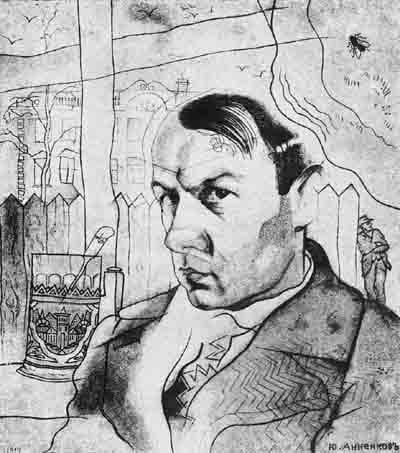
Met his village neighbor in Kuokkala, I. Repin
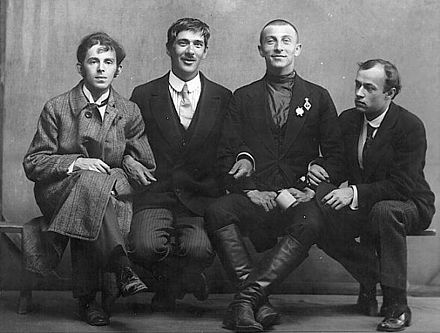
Attended classes at the Stieglitz school

Studied at the Parisian workshops of M. Denis and F. Vallotton

The artist’s debut took place at the Salon of Independents

He was a member of the World of Art association

He was appointed professor at the Moscow Academy of Arts

Painted a series of portraits of political figures

He became a founding member of the Society of Easel Artists
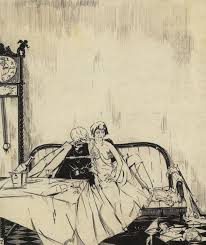
The artist’s graphics were presented at the “Art of the Book” fashion show in Leipzig
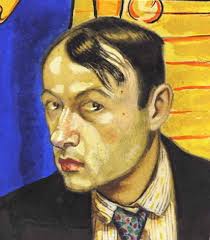
The solo exhibitions
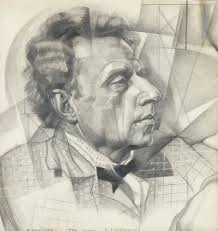
Received an Academy Award for his work for the film “Madame de ...”

“Diary of my meetings. The cycle of tragedies”

Designed books by A. Solzhenitsyn at YMCA-Press

The death of the artist

